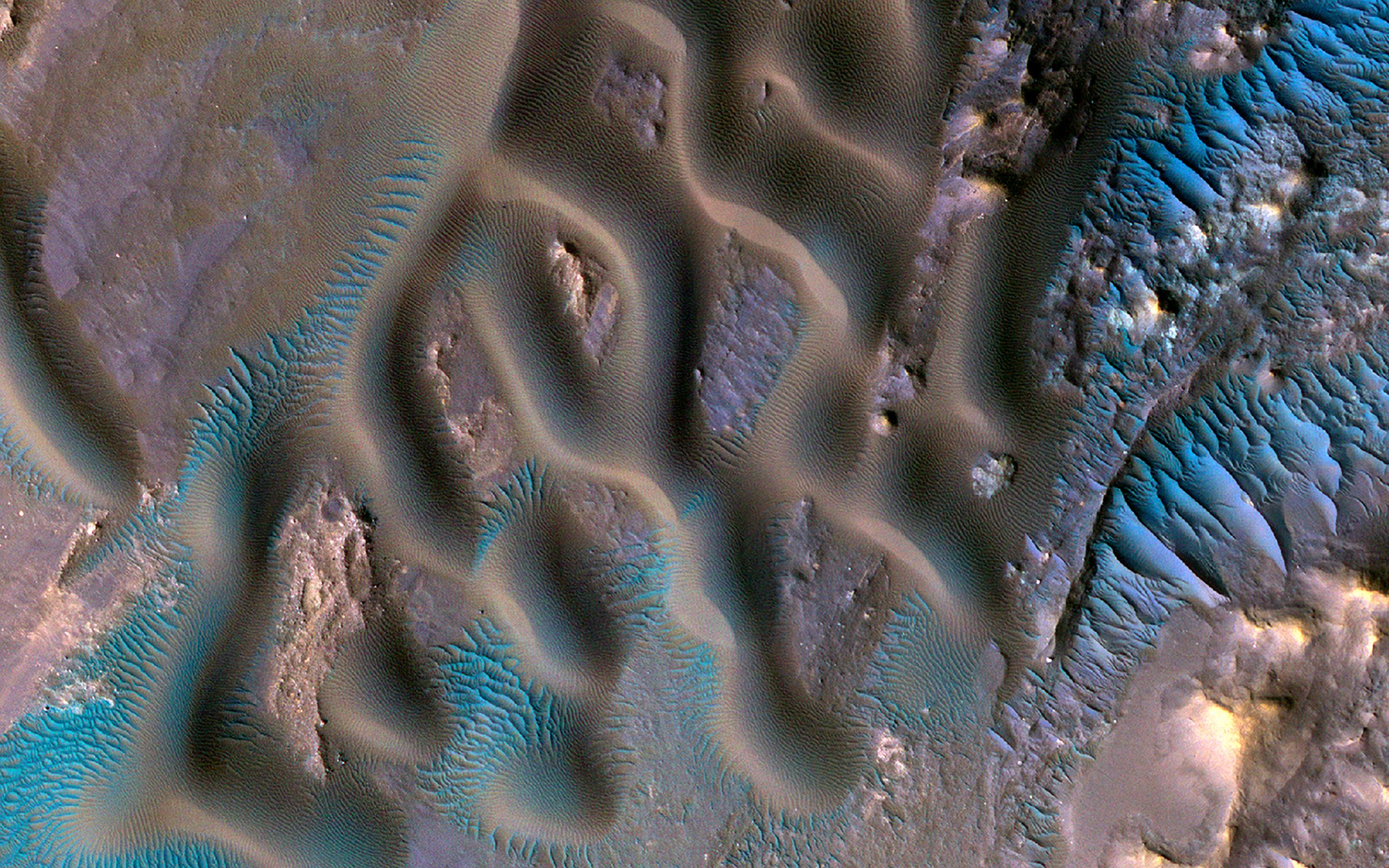NASA's Mars Reconnaissance Orbiter captures piles of sand in Gamboa Crater

This new image from Mars Reconnaissance Orbiter (MRO) shows piles of sand in different sizes and colours near the center of the Gamboa Crater, an impact crater on the Red Planet.
Led by NASA's Jet Propulsion Laboratory in Southern California, the Mars Reconnaissance Orbiter has been studying the Martian atmosphere and terrain from orbit since 2006. The mission has sent back thousands of stunning images of the Martian surface to help scientists learn more about the Red Planet.
As seen in this latest image, there are tiny ripples on the tops of the dunes, which merge into larger mega-ripples about 30 feet apart that radiate outward from the dunes. The larger and brighter formations that are roughly parallel are called "Transverse Aeolian Ridges" (TAR). They are covered with very coarse sand.
While the mega-ripples appear blue-green on one side of an enhanced colour cutout, the TAR appear brighter blue on the other. According to the mission team, it could be because the TAR are actively moving under the force of the wind, clearing away darker dust and making them brighter.
"All of these different features can indicate which way the wind was blowing when they formed. Being able to study such variety so close together allows us to see their relationships and compare and contrast features to examine what they are made of and how they formed," says NASA-JPL.
New from Mars Reconnaissance Orbiter, an enhanced color view of sand dunes and ripples in Gamboa Crater. The area shown is about half a mile (about a kilometer) across.Image details: https://t.co/iuCDtyLkxaMore about the mission: https://t.co/XYzVZguE3R pic.twitter.com/bcGLvAMLhX
— NASA Mars (@NASAMars) July 23, 2022
Earlier this year, NASA announced the extension of the MRO mission. In the extended mission, MRO will study the evolution of Mars' surface, ices, active geology, and atmosphere and climate. In addition, MRO will continue to provide important data relay service to other Mars missions.










